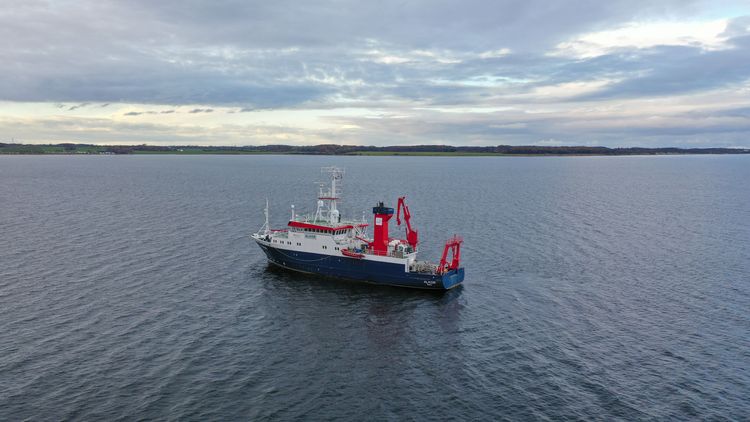New research project aims to find previously unknown sources of sulfur-containing trace substances
Oldenburg. One atom each of oxygen, carbon and sulfur make up the compound carbonyl sulfide - a trace gas that plays an important role in the global climate as a precursor to cooling aerosols. A large proportion of global emissions probably originate from the sea, but the exact source is still partly unclear. These emissions, which have not yet been explained in the global budget, are the focus of a recently approved international research project: scientists from Germany, the USA and Israel want to jointly examine the theory of whether coastal areas are an important source of carbonyl sulfide. Geoecologist Prof Dr Sinikka Lennartz from the Institute of Chemistry and Biology of the Marine Environment at the University of Oldenburg is leading the project on the German side. The German Research Foundation is providing around 350,000 euros over three years.
Carbonyl sulfide only occurs in the atmosphere in extremely low concentrations: The sulfur compound makes up around one in two billion air molecules. Nevertheless, the comparatively long-lived substance is important for the climate. Molecules that reach the stratosphere react there to form sulfuric acid and form aerosols that reflect sunlight and thus cool the earth. The most important sources of this trace gas are human emissions and the world's oceans. Carbonyl sulfide is formed there on the sea surface when sunlight reacts with organic sulfur compounds, but also through chemical processes in the sediment. Land plants absorb the gas during photosynthesis and remove it from the atmosphere.
"The concentration of carbonyl sulfide has been stable in recent decades, which indicates that sources and sinks are in balance. However, there is still a great deal of uncertainty about the size of these sources and sinks," says Lennartz. A few years ago, for example, measurements showed that land plants absorb many times more carbonyl sulfide than originally thought. The emissions from the oceans must be correspondingly greater. Researchers suspect that coastal regions in particular emit larger quantities of the trace gas, but there have only been a few measurements to date. In 2017, Lennartz developed a model for the marine emissions of carbonyl sulfide that is still the best match with observational data. The researcher also proved that carbonyl emissions from the open oceans are not the missing source. However, the resolution of her model is not fine enough to map the contribution of coastal areas.
In the new project, Lennartz now wants to work with researchers from the USA and Israel to test the hypothesis that coastal areas emit significantly more carbonyl sulfide than the open oceans. The team plans to carry out regular measurements at two stations on the Atlantic coast and in the Baltic Sea over the long term. On the one hand, the researchers will use a tower of the renowned Woods Hole Oceanographic Institution, which is located three kilometres off the coast of the island of Martha's Vineyard in the US state of Massachusetts. On the other hand, they are using the Boknis Eck measuring station at the GEOMAR Helmholtz Centre for Ocean Research Kiel in the Eckernförde Bay. At both locations, the emissions of carbonyl sulfide, carbon dioxide and carbon monoxide and their concentrations at the sea surface will be measured for at least one year.
Using the data, the team will first develop a model that calculates the production of carbonyl sulfide from the seabed to the sea surface. It will serve as the basis for another model that can calculate all relevant processes in a coastal region. The aim is to reduce the uncertainties in the global budget of carbonyl sulfide and to better understand the processes that control the exchange of trace gases between the ocean and the atmosphere.
The project, officially entitled "The contribution of coastal systems to the atmospheric carbonyl sulfide budget using tower-based fluxes, isotopic measurements and modelling", is coordinated by climate researcher Prof. Dr Max Berkelhammer from the University of Illinois at Chicago (USA). In addition to Lennartz, researchers from the Lamont-Doherty Earth Observatory at Columbia University in the US state of New York, from Rutgers University in the US state of New Jersey and from the Hebrew University in Jerusalem are also involved as leading scientists. The project is funded by the National Science Foundation in the USA, the DFG and the U.S-Israel Binational Science Foundation (BSF) for three years.

![[Translate to English:]](/f/5/_processed_/3/2/csm_ICBM-Logo-transparent-_91fe1c6774.png)
